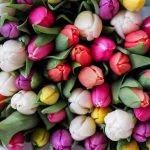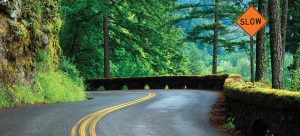
Falling Back to Earth
When Plan B yields Grade A insight
By Maria Johnson
We rounded the bend in our kayaks, not expecting to see them perched there in the leathery green boughs of mangrove trees. Three large, brown pelicans. They watched us from a dozen feet above a cove called Soldier’s Hole.
Two of them sat as tall and still as concrete statues, their ascending necks tucked tight against descending heads and bills.
Between the two tall birds, a third one, folded flat, drowsed in branches on the sunny side of the inlet, a bank that caught the full warmth of February in Florida’s Tampa Bay.
We stopped paddling and let the current nudge us closer. The birds fixed us with the perfect white circles of their eyes. They didn’t flinch, even when we raised our cell phones to photograph them. We drifted underneath them.
“This is so cool,” I whispered.
“I know,” my husband rasped. Paddling away, we realized that although we’d seen brown pelicans in North Carolina, we’d never seen them roosting in the wild.
Bobbing on the open water?
Yes.
Planted on piers?
Yes.
Stationed on harbor spiles, surrounded by diesel fumes, and boats, and the din of waterside restaurants?
Yes.
But tucked into the swampy wild?
No.
This was different.
Awesome.
Awe-inspiring.
Why?
Maybe because we were on their turf, in a vast and wild place, Fort De Soto State Park, where we were just another mated pair passing through. As casual kayakers and even more casual birdwatchers, we’d stumbled into the park — a birdwatching mecca, with more than 330 species known to alight here — on a day when brisk wind and shriveled mercury made sunbathing impossible.
It was Plan B, a fallback that ended up being better than we could have imagined, for who doesn’t benefit from spending time close to nature, whether in your garden, in an urban park or in a 1,000-plus acre preserve? The opportunity is the same — to see and feel that you’re a part of nature.
Of her.
Not above her.
What happens to her, happens to you.
It was a wonderful, humbling feeling, one that swelled our hearts as we skimmed the hammered surface of the water. Farther down the watery finger, gangly black cormorants watched us from the tops of no-wake signs. Ospreys poked their white heads and hooked noses out of shallow stick-built nests atop telephone poles. A vibrant tricolored heron stared until we passed. A young yellow-crowned night heron, crouching on a low branch, peered at us from between leaves. A turkey buzzard, with its faded black feathers and wrinkled red head, glided with the somber bearing of an undertaker — a reminder that, in many ways, we are all passing through.
Gulls keened overhead.
All around us, fish breached and flopped in silvery flashes. Splish. Bubbles congregated on the surface. The sighs of turtles and manatees below? In the clear shallows, red mangroves arched their prop roots down to the brackish water for a place to grab hold. Like flying buttresses on a Gothic church, they stabilize the mangroves and the estuary, providing cover for all manner of life — a true sanctuary, with flowers provided by oysters that cling to the roots in calcified bouquets.
We paddled on, wind at our backs.
More pelicans came into sight. Four. Five. Six. Seven. Eight. They hunkered in the mangroves, rocking in the branches as the wind gusted. Many of them wore a cap of fuzzy gold, a tinge of color announcing that breeding season was near. They regarded us calmly, waiting as an audience might wait for a play to unfold on stage. What would we, the main characters, do next?
For 40 years, from 1970 to 2009, brown pelicans were on the Endangered Species list. The pesticide DDT had pretty much wiped them out. Once sprayed on crops, the chemical ran off into estuaries and collected in fish. When pelicans ate the fish, the chemical affected the birds’ eggs, making their shells too thin to be viable. Bald eagles suffered, too.
Then we — specifically the Environmental Protection Agency — banned DDT and limited the use of pesticides. As she always does, nature responded to the chance to right herself and restore balance. Slowly, the pelicans and eagles returned.
Having reached the open water of the bay, we spun our kayaks around and headed back to the outfitter. The sun had begun its slow fall to the water. Fishermen appeared along the banks, casting nets and filaments from poles. It was feeding time. The pelicans, like prehistoric pterodactyls in silhouette, joined them, cruising, pausing, collapsing into nosedives. They surfaced quickly, tossing their heads back to take shots of mullet.
We took our time. Our paddles looped in the figure eights of infinity and we dug into the water, aware that we were moving against the wind.
Maria Johnson is a contributing editor of O.Henry. She can be reached at
ohenrymaria@gmail.com





